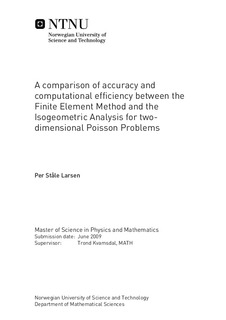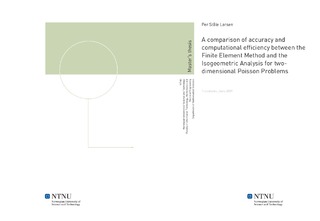| dc.contributor.advisor | Kvamsdal, Trond | nb_NO |
| dc.contributor.author | Larsen, Per Ståle | nb_NO |
| dc.date.accessioned | 2014-12-19T13:58:09Z | |
| dc.date.available | 2014-12-19T13:58:09Z | |
| dc.date.created | 2010-09-04 | nb_NO |
| dc.date.issued | 2009 | nb_NO |
| dc.identifier | 348850 | nb_NO |
| dc.identifier | ntnudaim:4793 | nb_NO |
| dc.identifier.uri | http://hdl.handle.net/11250/258520 | |
| dc.description.abstract | For small error the isogeometric analysis is more efficient than the finite element method. The condition number is lower in the isogeometric analysis than the finite element method. The isogeometric analysis produce general and robust implementation methods. The isogeometric analysis basis has higher continuity than the finite element method basis, and is more suitable to represent different geometries. | nb_NO |
| dc.language | eng | nb_NO |
| dc.publisher | Institutt for matematiske fag | nb_NO |
| dc.subject | ntnudaim | no_NO |
| dc.subject | SIF3 fysikk og matematikk | no_NO |
| dc.subject | Industriell matematikk | no_NO |
| dc.title | A comparison of accuracy and computational efficiency between the Finite Element Method and the Isogeometric Analysis for two-dimensional Poisson Problems | nb_NO |
| dc.type | Master thesis | nb_NO |
| dc.source.pagenumber | 69 | nb_NO |
| dc.contributor.department | Norges teknisk-naturvitenskapelige universitet, Fakultet for informasjonsteknologi, matematikk og elektroteknikk, Institutt for matematiske fag | nb_NO |

